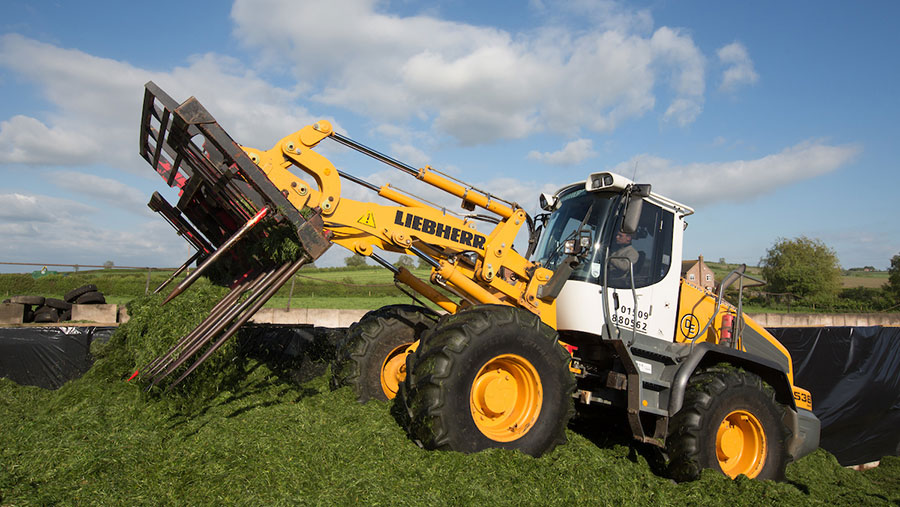Guide to silage clamp design and management
 © Tim Scrivener
© Tim Scrivener Poor silage clamp set-up and management can lead to loses of 20-25%, when the biological processes in the clamp goes wrong.
According to Will Wilson, business development manager at Bock UK, clamp design is key to the quality of silage and ease of ensiling, but often clamps are too wide, too long and overfilled.
Clamp design
He recommends installing sloping walls, as they improve compaction against the panel.
Clamp dimensions also play an important role, as a wider clamp presents a large silage face.
The face is the second highest cause of waste in the clamp, so should be as small as possible.
Face size should be determined by the speed of emptying, but the face should move back at least 2m a week.
It is also advisable to consider the clamp situation – make sure it is easily accessible to feed cattle and has no back wall so it can be expanded.
Clamp location
Clamps should point away from the prevailing wind and can be situated above ground for ease of construction. However, clamps below ground have the advantage of trapping carbon dioxide, reducing aerobic spoilage.
See also: Take our Academy course on silage management
Clamp density
However, the ensiling process is just as vital as clamp design. Achieving the correct density in the clamp is important and requires thin layers of no more than 15cm, says Dave Davies, who will be speaking on behalf of Volac at Grassland & Muck.
The target is 700kg of fresh matter per cu m; which, depending on the silage dry matter, is approximately equivalent to 220kg of dry matter per cu m.”
Chop length
When harvesting grass the chop length should be adjusted according to its dry matter, as a longer chop with high dry matter will not produce the right density and will be too bouncy, explains Dr Davies.
If grass is above 30% dry matter, chop to 1.5-2.5cm; if it is 20-30% dry matter, chop to 2.5-5cm and if it is less than 20%, increase the chop to 10cm to prevent clamp slippage.
Aerobic spoilage can cause losses of up to 25% in the clamp, and most problems at feeding are because the clamp was filled incorrectly and at the wrong density.
The use of additives can protect against aerobic losses, but the choice can be confusing, he warns.
When selecting additives, look at advice from AHDB and ask if there have been independent trials to prove the benefits to livestock.
The denser the silage is filled into the clamp, the quicker the oxygen is removed, but if the clamp is then not sealed properly, oxygen can get back in.
Side sheets
Side sheets are absolutely essential, with an oxygen barrier film on top, followed by the standard black polythene sheet.
There also needs to be enough weight on top of the sheet, to ensure the top of the silage remains dense and to reduce aerobic spoilage if the seal is damaged.
The best way to seal the clamp is to put gravel bags all around the edge of the wall and on the ramp and front. Tyres, which are used by many farmers leave gaps, so are not ideal. Sealing the ramp is crucially important.
